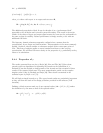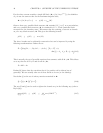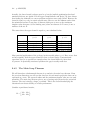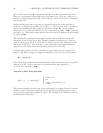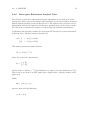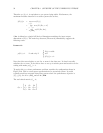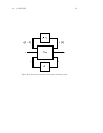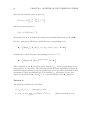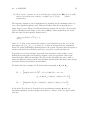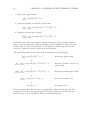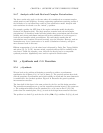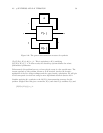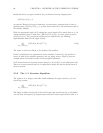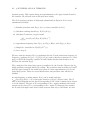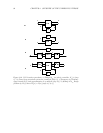2.4. µ ANALYSIS 55
iii) There exists a constant β ∈ [0, 1] such that for each fixed ∆ ∈ B∆, G(z) is stable
and for zero initial state response, e satisfies e
2
≤ β w
2
(robust
performance).
The frequency domain µ test is implemented by searching for the maximum value of µ
over a user specified frequency grid. Theorem 11 shows that this is equivalent to a
single, larger, µ test. There are subtle distinctions between the two tests. As we would
expect, calculation of the larger µ test is more difficult. More importantly, the result
does not scale. In the frequency domain test, if
max
ω∈[0,2π]
µ
∆
p
[F
u
(G
ss
, e
ω
I
nx
)] = β,
where β>1, then we are robust with respect to perturbations up to size 1/β.Inthe
state-space test, if µ
∆
s
(G
ss
)=β, where β>1, then we cannot draw any conclusions
about the robust performance characteristics of the system. We must scale the inputs or
outputs and repeat the calculation until the µ test gives a result less than one.
In practice we can only calculate upper and lower bounds for both of these µ tests.
Although the state-space and frequency domain µ tests are equivalent, their upper
bound tests have different meanings. We will see that this difference can be used to
study the difference between linear time-invariant perturbations and linear time-varying
(and some classes of non-linear) perturbations.
To clarify this issue, consider the D scales which correspond to ∆
s
and ∆
p
;
D
s
=
diag(D
1
,d
2
I
2
,D)
D
T
1
=D
1
>0,dim(D
1
)=nx × nx,
d
2
> 0,dim(I
2
) = dim(w) × dim(w),D∈D
,
D
p
=
diag(d
2
I
2
,D)
d
2
>0,dim(I
2
) = dim(w) × dim(w),D∈D
.
In the above D is the set of D-scales for the perturbation structure ∆, and, for
notational simplicity, we have assumed that dim(w) = dim(e). Now, the upper bound
tests are:



